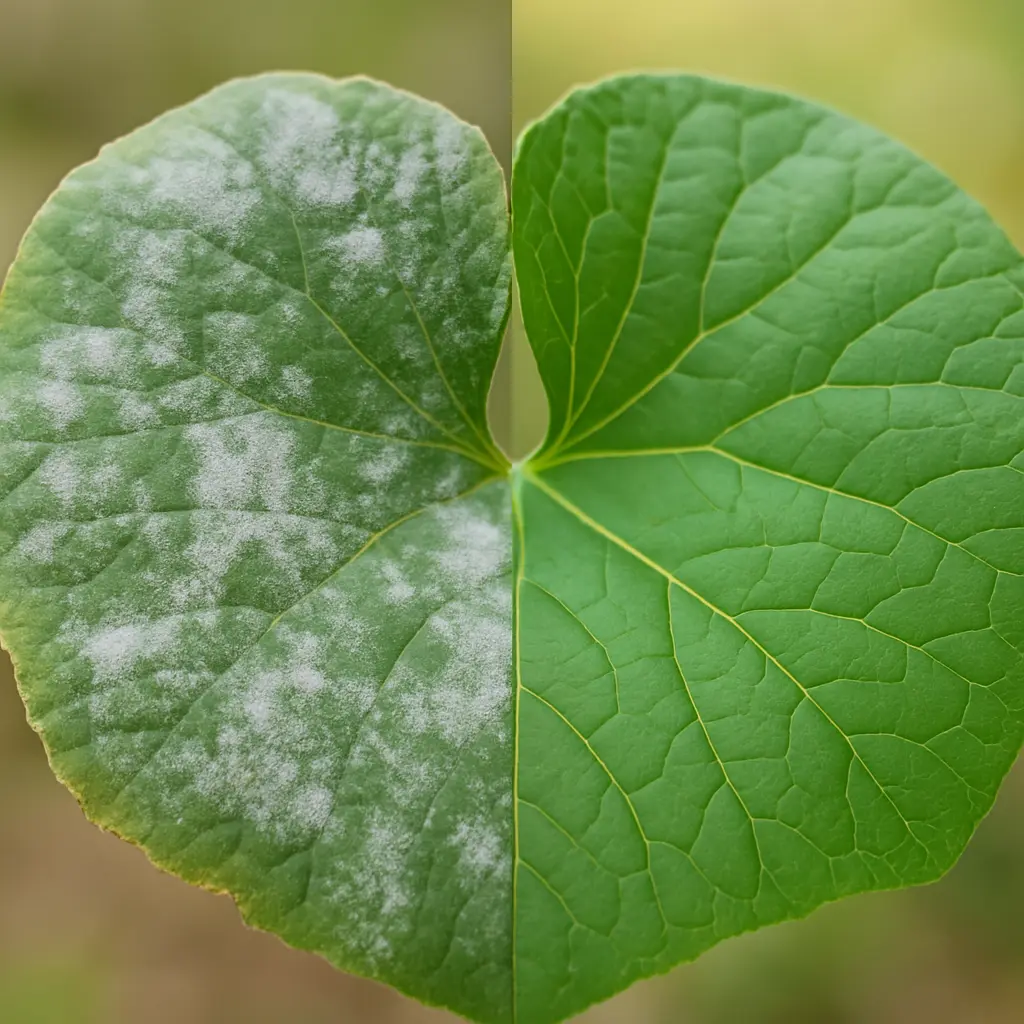Powdery Mildew Playbook: Save Zinnias, Squash, and Roses

A white, dusty coating spreading across leaves right now? Classic powdery mildew. It thrives in warm days, cool nights, and still air—exactly late‑summer conditions. The good news: you can slow it dramatically and keep plants productive to frost.
Confirm the diagnosis
- White/gray powdery patches on upper leaf surfaces; may curl and yellow over time
- Usually appears on zinnias, cucurbits, phlox, roses, and peonies late summer
- Unlike downy mildew, powdery mildew doesn’t require leaf wetness to spread
If in doubt, snap a photo and compare with our guide Identify Garden Pests Before They Attack, or use AI help in AI Plant Disease Identification.
Break the conditions, break the disease
- Increase airflow: thin crowded stems, stake flopping plants, trim nearby foliage
- Water deeply at soil level; avoid frequent overhead misting
- Water mornings so foliage dries fast; avoid evening splash
- Remove the worst leaves; keep healthy foliage to power recovery
Low‑risk, high‑return controls
- Potassium bicarbonate sprays can stop spores on contact
- Horticultural oils (neem, paraffinic) smother spores; spray in cool hours
- Sulfur works preventively on many ornamentals; don’t combine with oils
- Always test on a few leaves first and follow label directions
See background and options at the University of Minnesota Extension: Powdery Mildew .
Plant choices that resist mildew
- Choose resistant zinnia series, mildew‑resistant phlox and roses
- Space for airflow; water at root zone; avoid heavy late‑summer nitrogen
Keep blooms and harvests coming
- Deadhead zinnias weekly; harvest squash promptly to keep vines productive
- Remove and bin heavily infected plant debris at season’s end
Get timely, image‑based advice
Upload a close‑up to Gardenly to confirm likely mildew, get a quick IPM checklist, and preview airflow changes by thinning and staking in an instant bed render. Get Gardenly to act fast and protect peak‑season color and crops.
Stay consistent, and you can outrun mildew long enough to enjoy your late‑summer show.
Why powdery mildew explodes in August
- Warm days + cool nights create leaf surface humidity ideal for spores
- Dense canopies trap still air; shade in mornings slows drying
- Stressed plants from heat/water swings have weaker defenses
Host‑specific notes
- Zinnias: Choose ‘Profusion’ and ‘Zahara’ for strong resistance; deadhead often
- Cucurbits: Space vines, train on trellis for airflow; water at base only
- Roses: Favor newer resistant cultivars; prune for open centers
Monitoring routine (10 minutes weekly)
- Inspect lower leaves first; remove earliest lesions
- Sanitize pruners between plants
- Record hotspots; adjust airflow and irrigation timing there first
Spray schedule that doesn’t overdo it
- Preventive: Weekly light sulfur or bicarbonate before outbreaks on known hosts
- Curative: At first sign, rotate bicarbonate with oil a week apart; avoid oils above 85°F or on drought‑stressed plants
- Always test sprays on a few leaves 24–48 hours before full coverage
Cultural stack that wins
- Sun: Keep 6+ hours for zinnias; thin neighbors shading mornings
- Air: Stake and tie; remove crossing stems the same day you notice them
- Water: Early morning, soil‑level delivery; no nighttime leaf wetting
Cleanup and fall prevention
- Don’t compost heavily infected debris unless your pile runs hot
- Remove volunteer cucurbits that host disease into fall
- Plant resistant varieties next season; increase spacing by 20–30%
When to stop fighting it
- If temps stay above 90°F days and nights warm, many hosts outgrow damage
- Late September in cool zones: focus on sanitation and planning resistant varieties
Gardenly can help
Upload problem photos to Gardenly to validate likely powdery mildew, get tailored IPM steps, and preview airflow improvements from thinning, staking, or re‑spacing in before/after visuals. Get Gardenly to keep blooms strong through late summer.
FAQ
Will skim milk sprays help?
Mixed results; potassium bicarbonate and horticultural oils have stronger evidence. Avoid sticky residues that attract dust.
Can I spray during heat waves?
Avoid oils and sulfur above 85°F to prevent burn. Treat early morning on cooler days.
How do I protect pollinators?
Spray at dawn or dusk; avoid spraying open blooms; choose low‑toxicity options.
Is powdery mildew fatal?
Rarely, but it reduces vigor and bloom/fruit quality. Cultural fixes plus light controls usually see you through to frost.
Need a simple, visual plan to outpace mildew? Upload a photo to Gardenly and get targeted steps in minutes.
Cost and supplies overview
| Item | Qty | Est. cost | Notes |
|---|---|---|---|
| Potassium bicarbonate | 1 | $8–$15 | Mix per label; rapid knockdown |
| Horticultural oil | 1 | $12–$20 | Don’t spray above 85°F |
| Sulfur (wettable) | 1 | $10–$18 | Preventive rotations |
| Hand pruners + sanitizer | 1 | $15–$40 | Clean between plants |
| Stakes/ties for airflow | set | $10–$20 | Keep foliage separated |
Ten‑minute IPM loop
- Scout: Walk the bed; check undersides and lower leaves first
- Sanitize: Remove worst leaves; clean tools
- Adjust: Open canopy; set stakes/ties for airflow
- Treat: Spot‑spray per rotation plan if needed
- Record: Note hot spots; calendar next check in 5–7 days
Prevent next year
- Space resistant varieties a bit wider
- Water early morning only and at the root zone
- Keep spring canopies open from the start